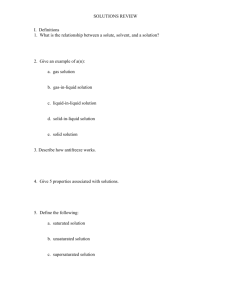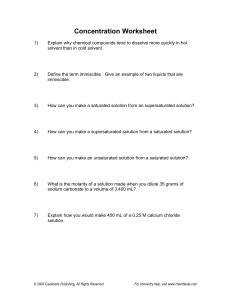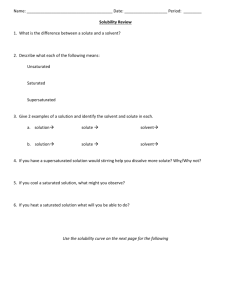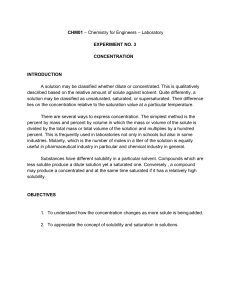cover sheet
advertisement
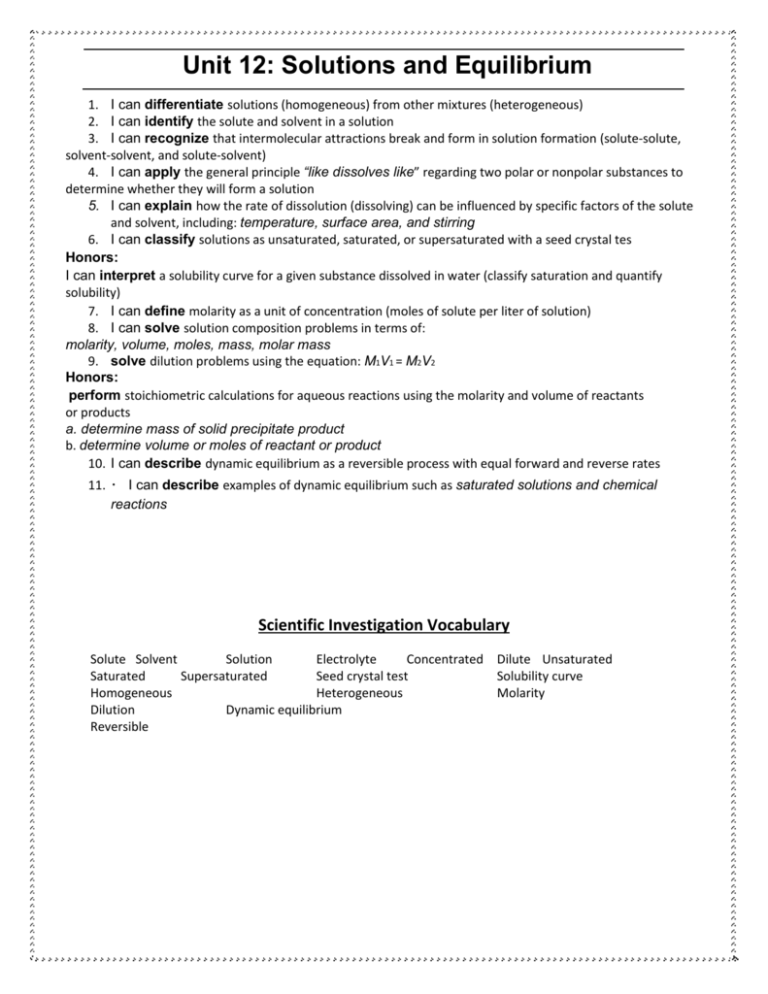
Unit 12: Solutions and Equilibrium 1. I can differentiate solutions (homogeneous) from other mixtures (heterogeneous) 2. I can identify the solute and solvent in a solution 3. I can recognize that intermolecular attractions break and form in solution formation (solute‐solute, solvent‐solvent, and solute‐solvent) 4. I can apply the general principle “like dissolves like” regarding two polar or nonpolar substances to determine whether they will form a solution 5. I can explain how the rate of dissolution (dissolving) can be influenced by specific factors of the solute and solvent, including: temperature, surface area, and stirring 6. I can classify solutions as unsaturated, saturated, or supersaturated with a seed crystal tes Honors: I can interpret a solubility curve for a given substance dissolved in water (classify saturation and quantify solubility) 7. I can define molarity as a unit of concentration (moles of solute per liter of solution) 8. I can solve solution composition problems in terms of: molarity, volume, moles, mass, molar mass 9. solve dilution problems using the equation: M1V1 = M2V2 Honors: perform stoichiometric calculations for aqueous reactions using the molarity and volume of reactants or products a. determine mass of solid precipitate product b. determine volume or moles of reactant or product 10. I can describe dynamic equilibrium as a reversible process with equal forward and reverse rates 11. I can describe examples of dynamic equilibrium such as saturated solutions and chemical reactions Scientific Investigation Vocabulary Solute Solvent Solution Electrolyte Concentrated Dilute Unsaturated Saturated Supersaturated Seed crystal test Solubility curve Homogeneous Heterogeneous Molarity Dilution Dynamic equilibrium Reversible




